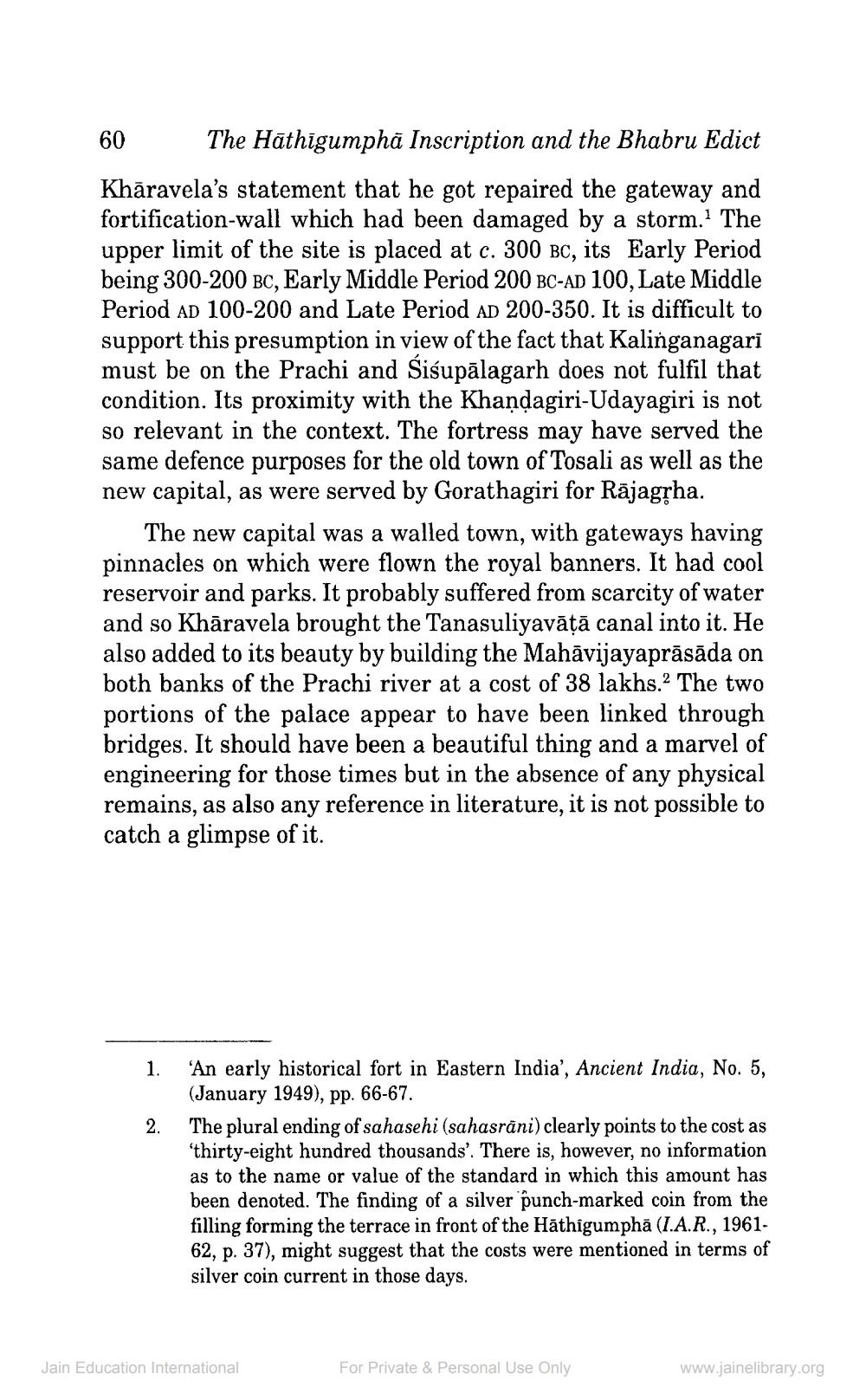________________
The Hathigumpha Inscription and the Bhabru Edict
Khāravela's statement that he got repaired the gateway and fortification-wall which had been damaged by a storm.1 The upper limit of the site is placed at c. 300 BC, its Early Period being 300-200 BC, Early Middle Period 200 BC-AD 100, Late Middle Period AD 100-200 and Late Period AD 200-350. It is difficult to support this presumption in view of the fact that Kalinganagari must be on the Prachi and Siśupālagarh does not fulfil that condition. Its proximity with the Khandagiri-Udayagiri is not so relevant in the context. The fortress may have served the same defence purposes for the old town of Tosali as well as the new capital, as were served by Gorathagiri for Rajagṛha.
60
The new capital was a walled town, with gateways having pinnacles on which were flown the royal banners. It had cool reservoir and parks. It probably suffered from scarcity of water and so Khāravela brought the Tanasuliyavăță canal into it. He also added to its beauty by building the Mahāvijayaprāsāda on both banks of the Prachi river at a cost of 38 lakhs.2 The two portions of the palace appear to have been linked through bridges. It should have been a beautiful thing and a marvel of engineering for those times but in the absence of any physical remains, as also any reference in literature, it is not possible to catch a glimpse of it.
1. 'An early historical fort in Eastern India', Ancient India, No. 5, (January 1949), pp. 66-67.
2.
The plural ending of sahasehi (sahasrani) clearly points to the cost as 'thirty-eight hundred thousands'. There is, however, no information as to the name or value of the standard in which this amount has been denoted. The finding of a silver punch-marked coin from the filling forming the terrace in front of the Hathigumpha (I.A.R., 196162, p. 37), might suggest that the costs were mentioned in terms of silver coin current in those days.
Jain Education International
For Private & Personal Use Only
www.jainelibrary.org




